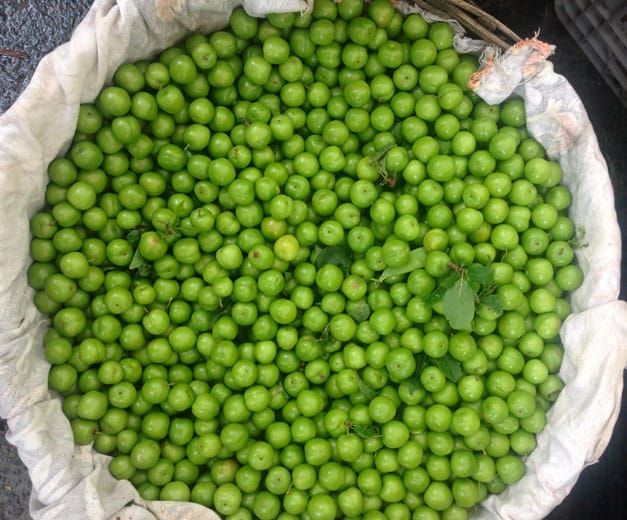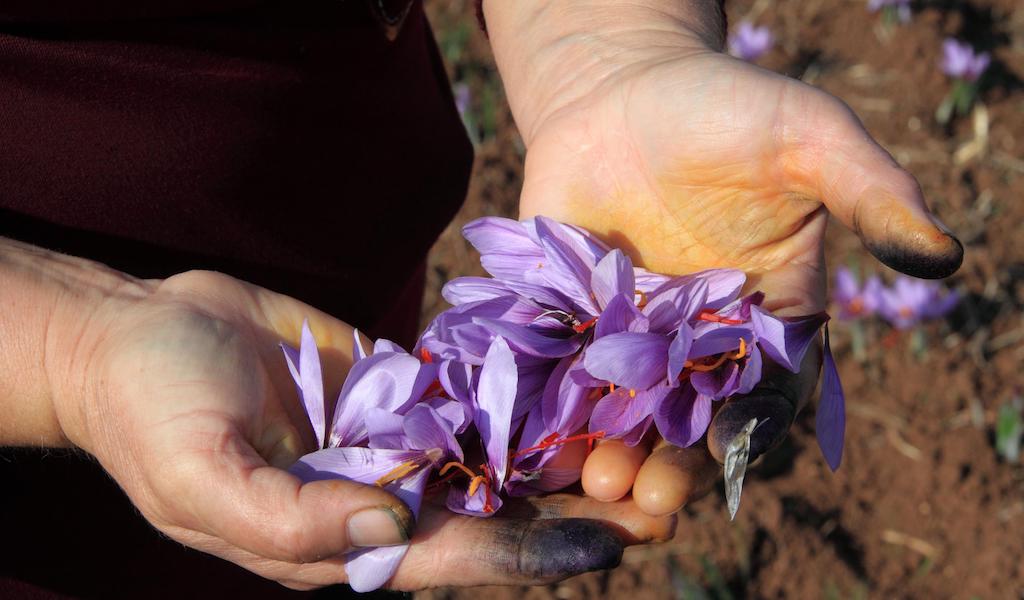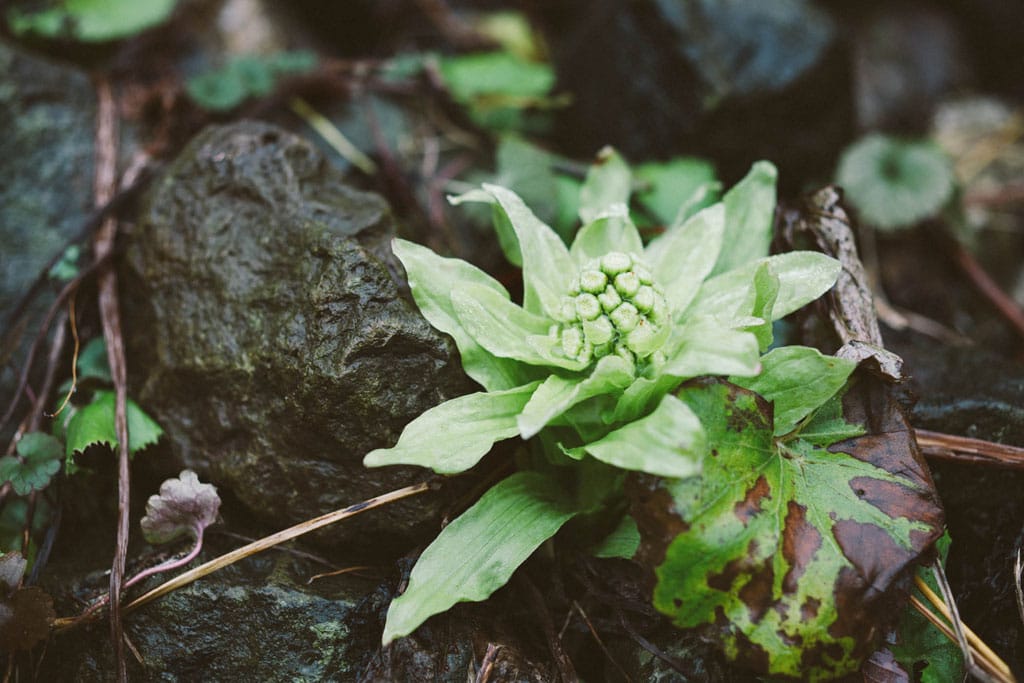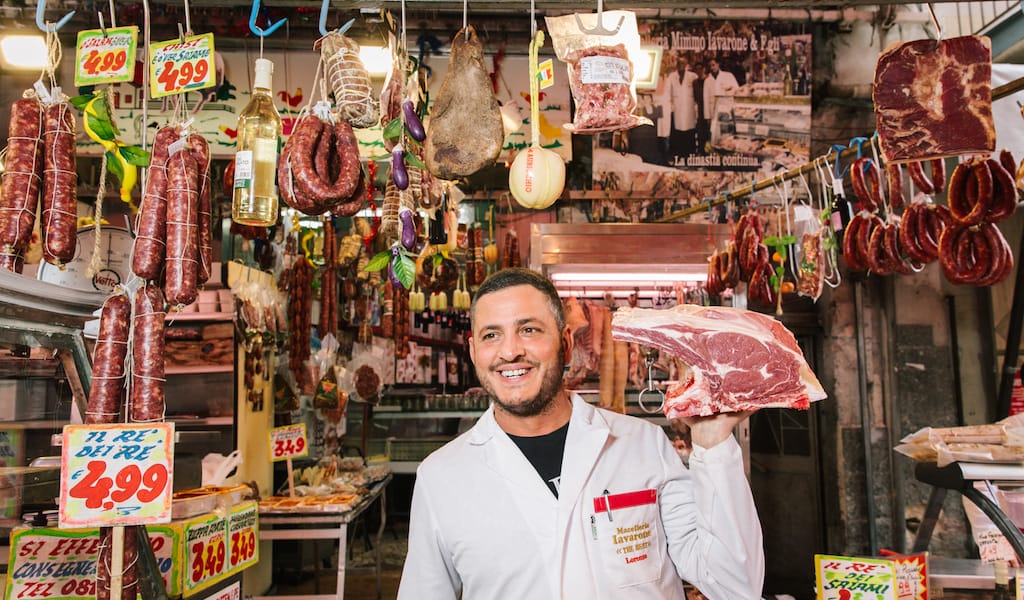Spring arrives at the markets in Istanbul with a great deal of color and fanfare. Vendors arrange peas in perfect diagonal rows, displaying their goods to lure you into a multi-kilo purchase. Men furiously carve out artichoke hearts and toss them into lemon-water-filled bags, step around massive piles of trimmings and hand you what feels like a new goldfish purchase. Fava beans are ubiquitous in their fuzzy pods, although less appealing because of all the prep work that comes with them. Best to enjoy fava beans in a restaurant, zeytinyağlı-style (with olive oil) and or in our favorite preparation, a garlicky mash like the chefs make at Müzedechanga in the Sabancı Museum.
Artichokes, fava beans and peas are not the only superstars of spring produce in Istanbul’s markets – the first fruits of the year are here, too. While shopping at the expansive Kadıköy market on the Asian side of the Bosphorus, we saw teens staining their fingers purple with mulberries. We hope each was careful to sift through the “Armani” underwear stands with his clean hand. Kids munched on small, tart-sweet green plums as their moms shopped for pajamas. Ripe, dark-orange loquats and lusty wild strawberries gleamed among the sea of tender spring greens. Sold and sold.
These are all expected spring treats, but what about the underdogs?
At the İnebolu Pazarı, vendors laid out stacks of intriguing greens on large, round metal dishes. At first glance, they seemed like a collection of weeds. These were not hybridized specimens; they were not human-bred to be shelf-stable or easy to prepare. These were wild, foraged spring shoots and leaves from the Black Sea coast. We asked the vendors how best to prepare each curious plant and every time we were inevitably told to cook X bundle “like spinach.” Maybe it would take a class from Chef Musa Dağdeviren at his famous Çiya restaurant to learn how to coax greatness from these wild ingredients.
 Yabani kuşkonmaz (wild asparagus, Asparagus acutifolius), delicately bound with thread, caught our eye as the most recognizable wild plant. The spears are slightly thinner than pencils and look like miniaturized versions of their cultivated brethren, but their taste is more intense and woodsy. We followed the vendor’s suggestion to fry them up with orange-yolked farm eggs and garlic for a lovely, quick spring breakfast.
Yabani kuşkonmaz (wild asparagus, Asparagus acutifolius), delicately bound with thread, caught our eye as the most recognizable wild plant. The spears are slightly thinner than pencils and look like miniaturized versions of their cultivated brethren, but their taste is more intense and woodsy. We followed the vendor’s suggestion to fry them up with orange-yolked farm eggs and garlic for a lovely, quick spring breakfast.
Dikenucu (greenbriar, Smilax) jumped out from the other wild greens because it looked like shiny, copper ivy tendrils. The vendor explained that the tendrils were harvested from the tips of a much larger plant from forests and by roadsides. He suggested we cook them with eggs or boil them for tea that is beneficial for the intestines. Dikenucu is like wild asparagus’ punk-rock brother; it tastes slightly bitter and sports flexible thorns.
Madımak (knotweed, Polygonum cognatum) covers entire tables at the İnebolu Pazarı in airy, tangled mounds. Lobed, dark-green leaves on short woody stems a few inches long have a bright, lemony flavor when cooked. Gather your best friends to help you strip the leaves from the stems because it’s going to take a while. (Read: make snacks and supply beer.)
Wild harvested spring greens are also available at the Şişli Ekolojik Pazar. This Saturday market offers a diverse array of organic vegetables, fruits, grains, dairy, tea and soaps. It also happens to attract families, adorable children and puppies, so be ready to be overwhelmed by cuteness.
There we found labada (dock, Rumex) at farmer Metin’s stand. He harvests labada (similar to sorrel) from the countryside in Eskişehir, about four hours southeast of Istanbul. Metin said the wild green grows when water is plentiful, in the late winter and early spring. He suggested preparing the meaty, sour leaves like cabbage or spinach(!) – we felt like a fortified Popeye after devouring the savory, hearty plant sautéed with garlic and olive oil.
 Forest-green hoşkıran (lamb’s quarters, Chenopodium) beckoned with its tender, diamond-shaped leaves and snappy stems. The vendor brought them from Safranbolu, four and a half hours east of Istanbul, close to the Black Sea coast. We removed the leaves from the stems, boiled them separately, then dressed them simply with lemon juice and olive oil. Velvety, luscious and satisfying. You would think we were describing wild strawberries dipped in kaymak (clotted cream). Nope, just wild greens.
Forest-green hoşkıran (lamb’s quarters, Chenopodium) beckoned with its tender, diamond-shaped leaves and snappy stems. The vendor brought them from Safranbolu, four and a half hours east of Istanbul, close to the Black Sea coast. We removed the leaves from the stems, boiled them separately, then dressed them simply with lemon juice and olive oil. Velvety, luscious and satisfying. You would think we were describing wild strawberries dipped in kaymak (clotted cream). Nope, just wild greens.
Foraging may be all the rage in the world of fancy, hyper-local restaurants like Noma in Denmark and Manresa in California, but we feel lucky to have access to flavorful, unique and nutritious wild spring greens at affordable prices in markets across Istanbul. Even if you cook them all like spinach, each plant has a distinct flavor that connects you to the spring rain-soaked soil of the Turkish countryside.
This is not to say we will just dream of wild greens when spring passes. Those first strawberries with kaymak are stiff competition.
Roxanne Darrow spent last year working on a five-acre diversified organic farm in the San Francisco Bay Area and now lives in Istanbul. She was previously a researcher at Food and Water Watch in Washington, D.C., where she co-wrote the report Biotech Ambassadors: How the U.S. State Department Promotes the Seed Industry’s Global Agenda
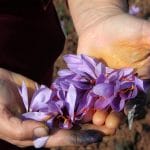 October 6, 2023 Harvest Week
October 6, 2023 Harvest Week
Let us begin with a little Greek mythology. Hermes – son of Zeus, god of thieves and […] Posted in Athens May 2, 2023 Spring Gone Wild
May 2, 2023 Spring Gone Wild
One of the great joys of spring in Japan is anticipating the appearance of sansai, or […] Posted in Tokyo April 30, 2019 Meet the Vendors
April 30, 2019 Meet the Vendors
Being a street butcher in Naples is not for the faint of heart. “Rain, sun, wind, heat, […] Posted in Naples
Published on May 09, 2014
Related stories
October 6, 2023
Athens | By Ilias Fountoulis
AthensLet us begin with a little Greek mythology. Hermes – son of Zeus, god of thieves and commerce and messenger of Olympus – and Krokos, a mortal youth, were best friends. One day, while the two friends were practicing their discus throwing, Hermes accidentally hit Crocus on the head and wounded him fatally. On the…
May 2, 2023
TokyoOne of the great joys of spring in Japan is anticipating the appearance of sansai, or mountain vegetables. When cherry blossoms begin to flutter on warming breezes, hikers take to the hills to forage for the first wild edibles. Supermarkets mount special displays of packaged (and unfortunately often hot-house-raised) young sprouted leaves, shoots and tubers.…
April 30, 2019
NaplesBeing a street butcher in Naples is not for the faint of heart. “Rain, sun, wind, heat, cold… being on the street seven days a week means knowing how to face every type of weather,” says Gaetano Iavarone. He is part of the invincible team behind Macelleria Iavarone, a butcher shop in Naples’ Sant’Antonio Market…







































